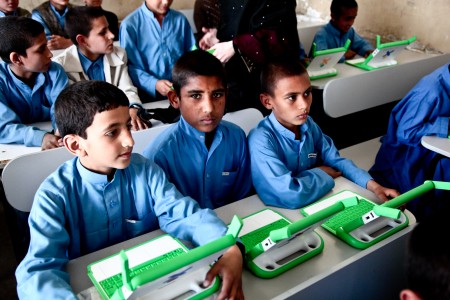Part of an ongoing series on OLPC in Afghanistan.
In their recent publication “Briefing Note – One Laptop Per Child in Afghanistan,†authors Lima Ahmad (AIMS), Kenneth Adams (AIMS), Mike Dawson (PAIWASTOON), and Carol Ruth Silver (MTSA) make one thing very clear: Afghanistan requires an innovative approach to improve their education system.
“The conventional remedy of building more schools, training more teachers and providing more materials would require a six fold increase to the education budget (in the order of $1.8Bn USD per year) and would take 10-15 years to yield measurable results,” the report reads. “While a steady increase in teacher capacity and educational infrastructure is expected over time, Afghanistan does not have the luxury of waiting 15 years to produce the work force foundations for sustainable economic growth.â€
Instead, the authors say, a more cost-effective, accelerated method lies in using OLPC’s blended learning model, which incorporates technology with teaching. If executed, in 12-18 months OLPC can more than double Afghan students’ time to learning, provide feedback on curriculum materials, and provide resources that the students wouldn’t otherwise have.
By adopting this model, OLPC can “finally give children in both mainstream and community settings sufficient learning time and support to achieve curriculum outcomes.â€
Make sure to check out the rest of the report here.


Pingback: êµìœ¡ìš© 디바ì´ìŠ¤ OLPC 는 대체ë 까? (1) ì ì€ í˜¸ì‘ê³¼ 명백한 한계 « Empathy Powered
Pingback: A time to be born and a time to learn | One Laptop per Child